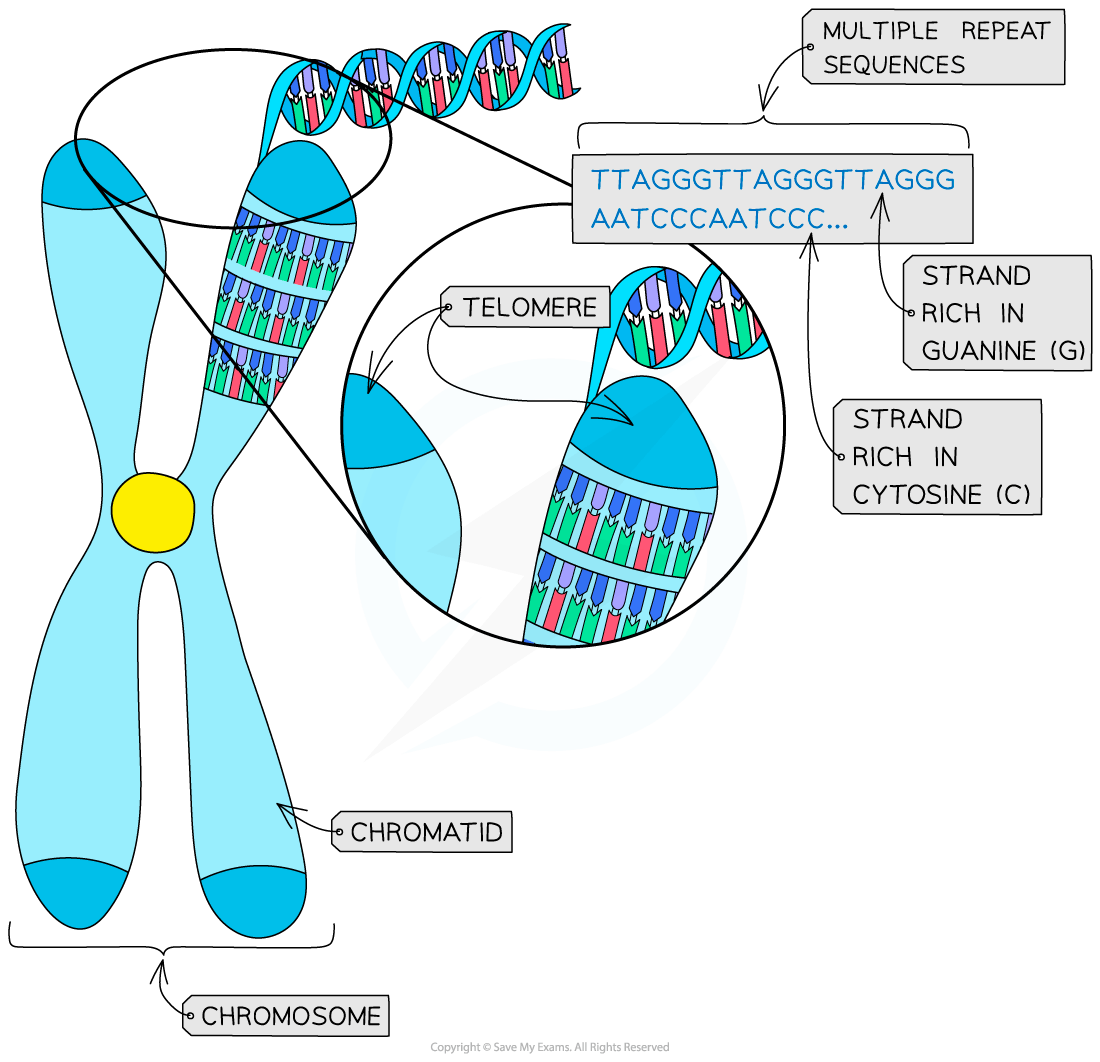The Role of Telomeres (Cambridge (CIE) AS Biology): Revision Note
Exam code: 9700
The significance of telomeres
The ends of the chromatids in chromosomes are ‘sealed’ with protective structures called telomeres
They are made of non-coding DNA (DNA that does not contain genes) that is made up of short base sequences that are repeated many times (multiple repeat sequences)
The main function of telomeres is to ensure that the very ends of the DNA molecules are included in DNA replication during mitosis
This is because the copying enzyme responsible for DNA replication is unable to run right to the very end of the DNA molecule and stops a little short of the end
If this end part of the DNA molecule contained an important gene, that piece of genetic information would be lost during DNA replication
In each subsequent cell division, a little more genetic information would be lost
Telomeres therefore act as a ‘buffer’ region of non-essential DNA
They ensure that no important coding sections near the ends of the DNA molecules are left out of the replication process
This ensures no genes are lost during cell division (the loss of vital genes can even result in cell death) and allows for continued replication of a cell

Examiner Tips and Tricks
Telomeres are similar to the coding regions of DNA molecules in that they are made of the same nucleotides. However, telomeres' base sequences are non-coding, meaning they do not code for proteins.

Unlock more, it's free!
Did this page help you?